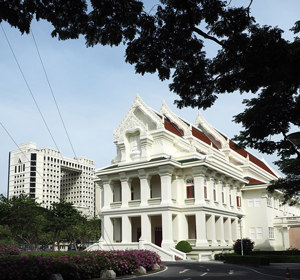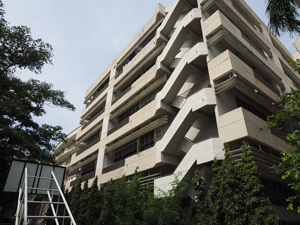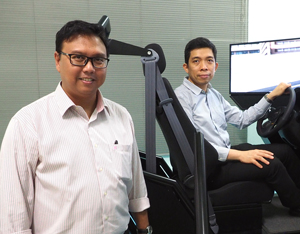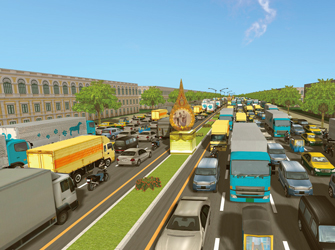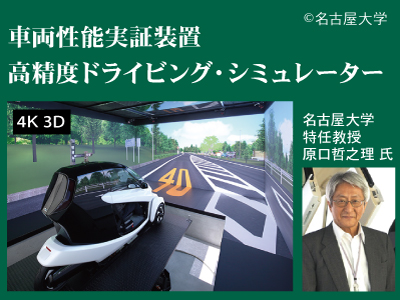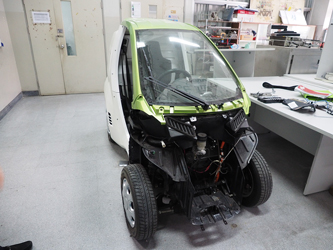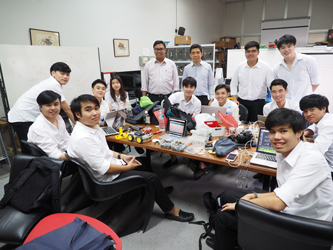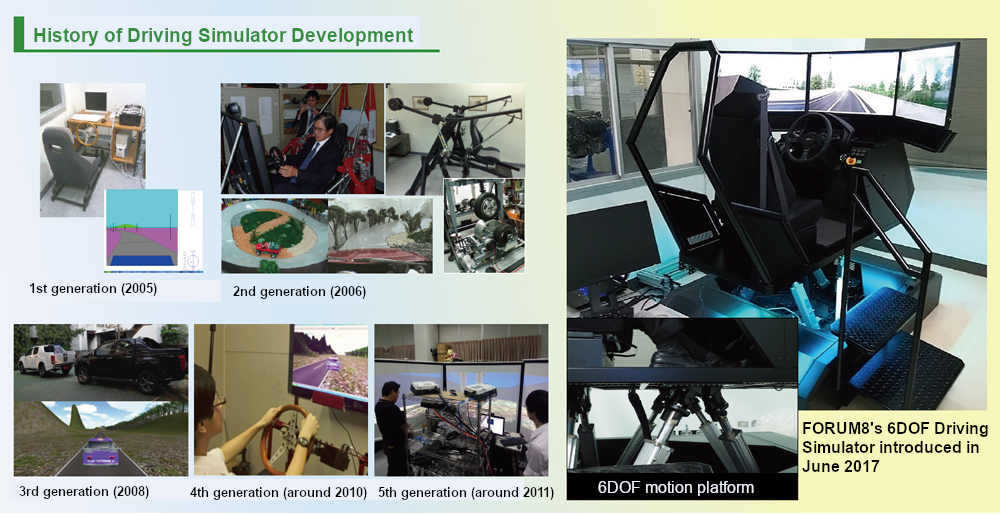|
|||||||||||||
|
|||||||||||||
|
The same platform as one being used at Nagoya University enables the comparison of study result
"I think that using a simulator with the same platform as Nagoya University uses has an advantage to compare study results of driver behaviors and autonomous driving with Nagoya University. One of the factor I decided to introduce the simulator was of course because I highly evaluated the performance of it after I actually experienced it", says Assoc. Prof. Noomwongs. Students in master's course and undergraduates already started to utilize the driving simulator for experiments to investigate driving behaviors of impaired drivers and senior drivers. In addition, students at the faculty of civil engineering also want to use it for their studies. Advanced research activities using a driving simulator is liked by students. Three or four master's degree students and about 30 undergraduates join the laboratory every year. More than a dozen students were preparing for an experiment and developing programs in the laboratory, being surrounded by an experiment vehicle for autonomous driving, model vehicle, and computers.
Safety, ITS, and motorizing are three main components of study Driving simulator accelerates the study Researches on automobile being conducted at SMRC covers three main fields. The first field is a collision prevention system called "Active & Pre Crash Safety". The core of this study is to collect driving behavior data by using drive recorders. In the current study, the students are investigating the detection of hazardous driving and the lane departure alarm system from GPS data and driver's biological data. This research is for technologies for the autonomous driving such as the Automatic Emergency Brake system (AEB), Lane Keep Assist system (LKA), and braking and steering operation to minimize the collision from behind. The Intelligent Transportation System (ITS) is the second field. it contains various studies related to traffics such as eco driving, Vehicle-to-Vehicle communication (V2V), and collecting probe vehicle data and estimating travel time in order to recognize the traffic distribution. SMRC also participates in social experiment known as "WBCSD SMP 2.0 Bangkok" (Sathon model). In this experiment, a variety of measurements are conducted to solve traffic issues in "Sathon District", which is a high-building street in Bangkok. The third field is a research development of electronic vehicles. Energy usage of battery vehicle and hybrid vehicle, and research on battery, fuel cell, and super capacitor are included in this study. Supported by Ministry of Energy, SMRC attends a project estimating the amount of energy consumed by those vehicles under the traffic situation in Bangkok. Assault new study themes by utilizing the 6DOF DS SMRC is planning to expand studies about driving behavior by utilizing the newly installed Forum8's 6DOF driving simulator. In the field of safety driving, many people is paying attention to the point that actual driving environments can be reproduced by importing drive recorder data to the simulator. For example, we cannot research on drink drive and drowsy driving without a driving simulator. The Advanced Driver Assistance System (ADAS) and autonomous driving function are also able to be tested on the drive simulator. Besides, the reproduction of the situation just before accidents may be able to explain what premonitory behaviors cause the accidents. Parameters obtained from experiments can be compared with study results made by Nagoya University, and it seems to be a benefit. Develops original driving simulators This time, SMRC introduced Forum8's 6DOF driving simulator, but it has developed a lot of driving simulators since 2005 on its own. The fact that the engineers of SMRC who well understand technical challenges and difficulties of development chose the Forum8 product has great meaning. The followings are the history of the developments.
●The 1st generation (2005) ●The 2nd generation (2006) ●The 3rd generation (2008) ●The 4th generation (2010) ●The 5th generation (2011) |
||||||||||||
| (Up&Coming '18 New Year issue) | ||||||||||||
|
||||
